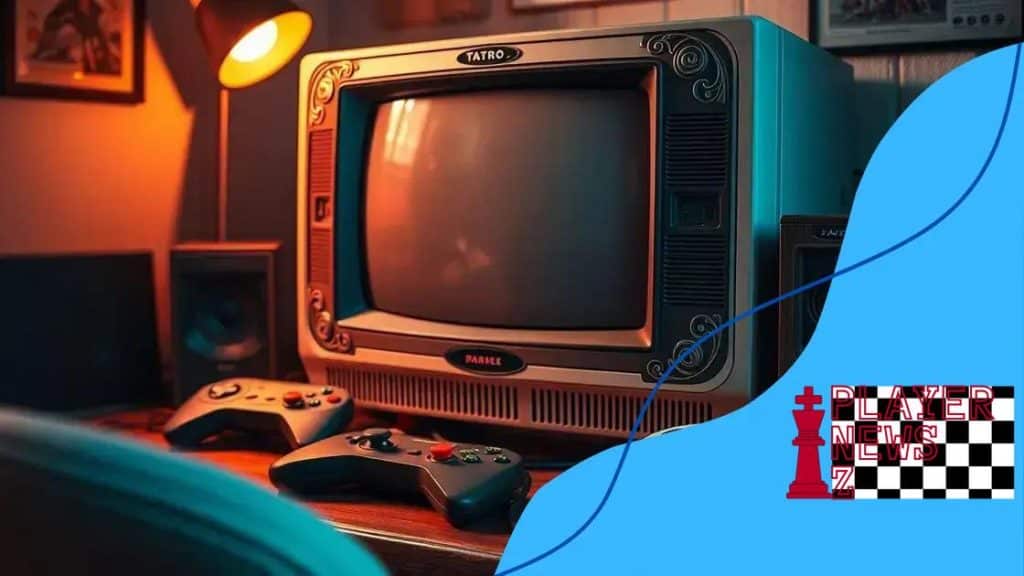The significance of 90s games in the gaming industry

The significance of 90s games in the gaming industry is profound, as they established foundational gameplay mechanics, iconic narratives, and community engagement that continue to influence modern gaming experiences.
The significance of 90s games in the gaming industry goes beyond nostalgia. These titles laid the groundwork for what we know and love about gaming today. Curious about their lasting influence?
Cultural impact of 90s games
The cultural impact of 90s games was profound and far-reaching. These games didn’t merely entertain; they shaped a generation’s experiences, friendships, and even identity. As we delve into this topic, we will uncover the reasons why these games have left such a lasting mark.
Influence on Popular Culture
In the 90s, video games became a staple of pop culture. Iconic characters like Mario and Sonic became household names. These characters appeared not only in games but also in cartoons, merchandise, and more. They were part of the cultural zeitgeist, shaping trends and influencing media.
Social Connections
90s games were also instrumental in forming social connections. Multiplayer games like Mario Kart or Street Fighter brought friends and family together. Whether it was a weekend gathering or after-school competition, gaming became a vehicle for social interaction.
- Friendship formation through co-op gameplay
- Competitions and tournaments strengthening community bonds
- Online gaming’s rise towards the end of the decade
Beyond personal connections, 90s games also influenced the larger community. Online gaming began to take shape with titles like Doom, paving the way for future social platforms. This shift fundamentally changed how players interacted with each other.
Shaping Future Generations
The aesthetics and storytelling of 90s games set the stage for future game development. Complex narratives in games like Final Fantasy VII introduced players to deeper storytelling in interactive formats. Such storytelling paved the way for newer games that rely heavily on narrative systems.
Furthermore, 90s games explored diverse genres, from platformers to RPGs, influencing the types of games that would come later. This experimentation with different genres could be seen in the rise of game design schools and development communities dedicated to improving gaming narratives and mechanics.
As we can see, the cultural impact of 90s games transcended mere entertainment. They defined a generation, created social spaces, and set the foundation for future innovations in the gaming industry.
Comparing graphics and gameplay then and now
When comparing graphics and gameplay then and now, it’s fascinating to see the evolution that has taken place over the years. In the 90s, games were defined by pixelated graphics and simple mechanics. Today, we experience stunning visuals and complex gameplay that were once unimaginable.
Visual Evolution
The leap in graphics from the 90s to the present is monumental. Games like Super Mario 64 introduced 3D environments, but they were limited by technology. Now, titles such as The Last of Us Part II showcase realistic character models and environments. This transformation has changed how players interact with games.
- High-definition textures and detailed environments
- Improved character animations and realism
- Use of motion capture technology
These advances allow players to immerse themselves in a game world unlike ever before. The graphics enhance storytelling by adding emotional depth to the characters and settings.
Gameplay Mechanics
Along with visual advancements, gameplay mechanics have also evolved significantly. 90s games often focused on straightforward objectives, whereas modern games offer complex systems and strategies. For example, Doom from the 90s was about fast-paced shooting without much narrative, while today’s games like The Witcher 3 provide rich stories with numerous choices affecting the outcome.
Moreover, gameplay now often includes features like online multiplayer, ongoing updates, and downloadable content, enhancing player engagement and replayability. These changes allow gamers to experience new content consistently, keeping the community active and engaged.
Furthermore, indie developers have emerged due to accessible game engines and distribution platforms. This leads to a diverse range of gameplay experiences, making more unique titles available. Developers can experiment with new mechanics that challenge traditional formats.
As we consider the shifts in graphics and gameplay, it’s evident how technology and creativity have merged to create extraordinary gaming experiences. The journey from simple graphics and mechanics to intricately designed worlds has redefined entertainment.
How 90s games shaped modern game design

Understanding how 90s games shaped modern game design reveals a fascinating journey through innovation and creativity in the gaming world. The design principles and mechanics established during this decade still influence many aspects of gaming today.
Innovative Gameplay Mechanics
Many gameplay mechanics that define modern titles were born in the 90s. Games like The Legend of Zelda: Ocarina of Time introduced intuitive controls and puzzle-solving elements that are now staples in various genres. The concept of open-world exploration became popular, inspiring the expansive worlds seen in current games.
- Introduction of 3D gameplay environments
- Use of immersive storytelling techniques
- Puzzle-solving mechanics that engage players
The success of these mechanics encouraged developers to experiment more with game design, fostering a culture of innovation that continues to thrive.
Character Development and Storytelling
In the 90s, game storytelling reached new heights with titles like Final Fantasy VII. Complex narratives and character arcs captivated players, pushing developers to prioritize storytelling in their designs. This trend continues today, with games often aimed at delivering rich narratives and in-depth character explorations.
As a result, modern games now combine superb graphics and emotionally engaging stories, allowing players to connect deeply with the characters. The emphasis on character development has prompted game designers to invest time into crafting memorable protagonists.
The success of franchises born in the 90s paved the way for new generations of heroes and adventures, influencing how stories are told in interactive formats. Developers today still look back at those early narratives for inspiration, ensuring these classic elements remain relevant.
Moreover, the 90s introduced the concept of player agency. Players were given choices that impacted the game’s outcome, a practice that has since evolved into complex decision-making systems in modern games. Choices made by players now often lead to multiple endings, enhancing replayability.
Clearly, the impact of 90s games on modern game design is profound. By laying the groundwork for innovative mechanics, narrative depth, and player engagement, these early titles continue to resonate within the industry today.
Influential titles and their legacy
Exploring influential titles and their legacy from the 90s reveals how these games have shaped the industry and continue to impact new generations of players. Many iconic titles emerged during this time, each contributing uniquely to gaming culture.
Defining Classics
Games like Super Mario 64 set new standards for 3D gameplay and level design. Its innovative mechanics not only changed platform gaming but also inspired countless titles that followed. Another landmark title, Doom, popularized first-person shooting and introduced multiplayer features, laying a foundation for competitive gaming.
- Mario’s influence on game design and mechanics
- Doom’s role in shaping first-person shooters
- Innovations in graphics and storytelling from these titles
These classic games have left a lasting imprint, influencing not just the mechanics of game design but also the cultural perception of video games.
Lasting Influence on Game Development
Modern game developers often reference these influential titles when creating new games. The character development seen in The Legend of Zelda: Ocarina of Time demonstrated the importance of narrative in games, prompting a shift toward deeper storytelling. This influence is evident in current RPGs, where player choices significantly affect story outcomes.
The legacy of 90s titles extends beyond just gameplay mechanics. They sparked community engagement through fan interactions, such as fan art and forums, which continue today. Titles like Final Fantasy VII created dedicated fanbases and a culture of discussion that persists in gaming communities.
Moreover, the artistic styles and soundtracks from these games are still celebrated. They influence contemporary game music and aesthetic choices, demonstrating the enduring power of their creative vision.
As we examine the influential titles and their legacy, it is clear that their impact cannot be overstated. From mechanics and storytelling to community engagement, these games shaped the industry and continue to inspire future innovations.
The evolution of gaming communities since the 90s
The evolution of gaming communities since the 90s highlights how gaming has become a shared social experience rather than just a solitary activity. In the early days, gamers connected through local multiplayer in arcades or at home. This laid the groundwork for today’s expansive online communities.
From Local to Global
In the 90s, games like Street Fighter II popularized competitive gaming in arcades, creating local communities where players gathered to compete. As the internet became more accessible, online gaming emerged with titles like Doom and Quake. These games allowed players to connect globally, changing how communities formed and interacted.
- Transition from local tournaments to global competitions
- Emergence of online clans and guilds
- Development of gaming forums and chat rooms
These changes helped foster connections among players from different backgrounds and locations, broadening the sense of community.
Social Media and Streaming
As social media grew in the 2000s, it further transformed gaming communities. Platforms like Facebook and Twitter enabled gamers to share experiences, news, and content. Live streaming platforms, especially Twitch, took this a step further by allowing players to broadcast their gameplay and interact with audiences in real time.
This shift not only connected gamers but created new opportunities for content creation and game promotion. Communities could support their favorite streamers, fostering a sense of belonging and support around shared interests.
Moreover, the rise of esports added another layer to gaming communities. Competitive gaming events now fill stadiums and attract millions of viewers online. Players band together to support their teams, creating a vibrant culture around competition and teamwork.
Through these changes, the evolution of gaming communities since the 90s reflects a remarkable journey from simple local interactions to complex global networks. These communities have become essential to the gaming experience, emphasizing social engagement and collaboration.
In conclusion, the gaming industry has come a long way since the 90s, shaping how we play, connect, and engage with each other. From the humble beginnings of local multiplayer games to the dynamic online communities of today, each evolution reflects the creativity and passion of gamers. These advancements have made gaming a vibrant social experience that continues to grow and adapt. The influential titles and their legacies remind us of the importance of innovation, storytelling, and community in making gaming a beloved pastime for millions.
FAQ – Frequently Asked Questions about the Significance of 90s Games in the Gaming Industry
How did 90s games influence modern gameplay mechanics?
90s games introduced innovative mechanics that are now staples in gameplay, such as open-world exploration and complex puzzle-solving.
What role did community play in the evolution of gaming?
The 90s marked the transition from local multiplayer gatherings to global online communities, allowing players to connect across the world.
Which 90s titles are considered iconic?
Games like Super Mario 64, Doom, and Final Fantasy VII are considered iconic for their groundbreaking gameplay and storytelling.
How have gaming communities changed over the years?
Gaming communities have evolved from local groups to vast online networks, enhanced by social media and streaming platforms, fostering collaboration and competition.





